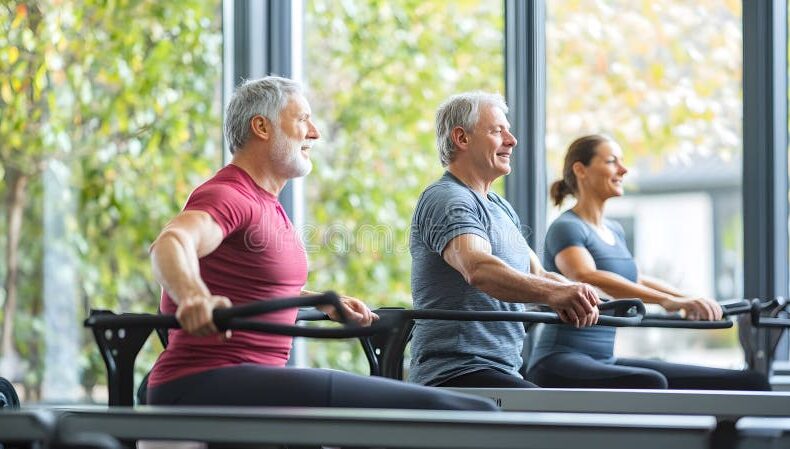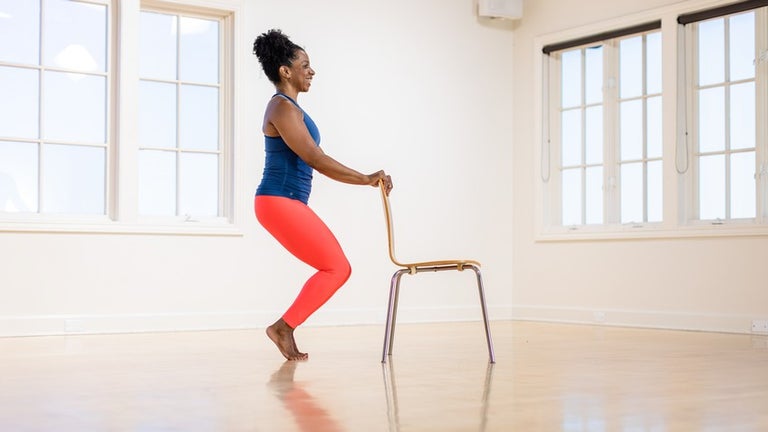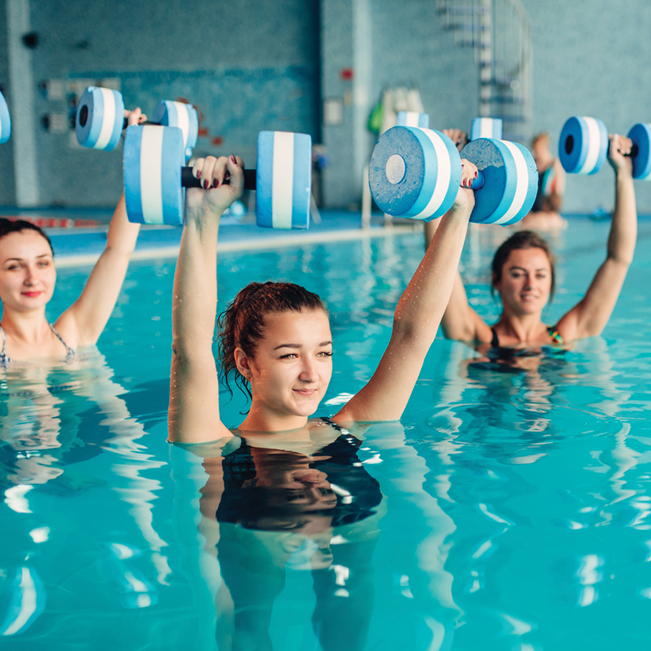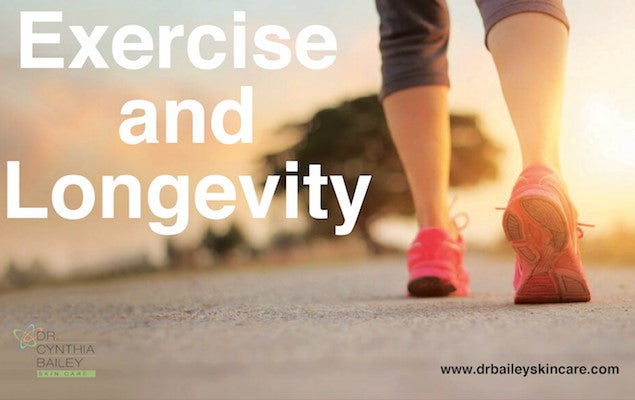
Aging Gracefully: A Comprehensive Guide to Fitness for Longevity, Balance, and Vitality
The Modern Approach to Aging: Embracing Fitness for a Vibrant Future
In our ongoing pursuit of a fulfilling life, the conversation around aging is shifting dramatically. Gone are the days of viewing our later years as a period of inevitable decline. Today, the focus is on Aging Well—a proactive, holistic approach to maintaining vitality, independence, and joy. Central to this philosophy is a commitment to physical fitness, not as a quest for aesthetic perfection, but as a cornerstone of functional health. This isn’t about running marathons or lifting immense weights; it’s about intelligent, adaptive exercise that protects our joints, sharpens our minds, and empowers us to live life on our own terms. This comprehensive guide offers essential Fitness Tips tailored for longevity, focusing on the critical pillars of balance, strength, and mindful movement.
Table of Contents
ToggleAs we age, our bodies naturally undergo changes, from a decrease in muscle mass to shifts in bone density. However, these changes are not a fixed destiny. Through targeted exercise, we can significantly mitigate these effects, enhancing our overall Health & Wellness. The goal is to build resilience, prevent injuries, and cultivate a deep connection between mind and body. Whether you’re exploring Pilates for the first time, rediscovering the gentle flow of yoga, or learning how to adapt strength training for your needs, this article will provide actionable insights and best practices to help you build a safe, sustainable, and deeply rewarding fitness routine that supports a vibrant lifestyle for years to come.
Section 1: The Foundational Pillars of Fitness for Longevity
Understanding why certain types of exercise are beneficial is the first step toward building an effective routine. For seniors, fitness goals evolve from pure performance to functional strength, injury prevention, and cognitive health. This section breaks down the three most critical areas of focus for a mature and effective fitness plan.
Combating Sarcopenia and Osteoporosis: The Case for Strength
Two of the most significant physiological challenges associated with aging are sarcopenia (age-related muscle loss) and osteoporosis (decreased bone density). After age 30, adults can lose 3-5% of their muscle mass per decade, a process that accelerates after 60. This loss of strength directly impacts mobility, stability, and metabolic health. Similarly, weakening bones increase the risk of fractures, which can be life-altering events. The most effective antidote is resistance training.
Contrary to outdated beliefs, weight-bearing exercise is not only safe but essential for Senior Living. This doesn’t necessarily mean heavy barbells. Effective resistance can come from:
- Light Dumbbells or Kettlebells: Perfect for exercises like bicep curls, overhead presses, and goblet squats.
- Resistance Bands: Versatile, portable, and gentle on the joints, ideal for targeting smaller stabilizer muscles.
- Bodyweight Exercises: Modified push-ups (against a wall), chair squats, and glute bridges build functional strength using your own body as resistance.
The Critical Role of Balance and Proprioception in Fall Prevention
According to the CDC, falls are the leading cause of injury-related death among adults aged 65 and older. This stark reality underscores the importance of balance training. Balance is not just about standing on one leg; it’s a complex skill involving our inner ear, vision, and proprioception—the body’s awareness of its position in space. As we age, these systems can become less efficient. The good news is that, like a muscle, balance can be trained and improved.
Exercises that challenge stability are key. Modalities like Tai Chi, often described as “Meditation in motion,” are exceptionally effective. Its slow, deliberate movements force the body to constantly adjust and stabilize. Similarly, Yoga and Pilates emphasize core strength, which is the foundation of good balance. Simple practices like standing on one foot while brushing your teeth or walking heel-to-toe across a room can be integrated into your daily life. Improving balance is a direct investment in your safety and confidence, making your home and community environments more navigable. This ties into Home Improvement, where creating a safe, clutter-free space complements your physical training.
The Mind-Body Connection: Fitness for Mental and Emotional Well-being
The benefits of exercise extend far beyond the physical. The connection between movement and Mental Health is profound. Mindful practices like yoga, Pilates, and Tai Chi require deep concentration, synchronizing breath with movement. This focus helps quiet the mind, reduce anxiety, and foster a state of Mindfulness. The gentle, rhythmic nature of these activities can lower cortisol levels, the body’s primary stress hormone, offering powerful Stress Management benefits.

This holistic approach views the body and mind as an integrated system. Regular physical activity has been shown to improve cognitive function, reduce the risk of dementia, and enhance Sleep Health. By choosing activities you genuinely enjoy, exercise transforms from a chore into a cherished part of your self-care routine, contributing to a positive outlook and emotional resilience—a cornerstone of Holistic Health.
Section 2: A Deep Dive into Senior-Friendly Exercise Modalities
With a clear understanding of the foundational goals, the next step is to choose the right activities. The ideal fitness plan incorporates variety, addressing strength, flexibility, balance, and cardiovascular health. Here’s a detailed look at some of the best options available.
Pilates: The Art of Control and Core Strength
Originally developed for rehabilitation, Pilates is an outstanding choice for older adults due to its focus on low-impact movement, core stabilization, and precise muscle control. It can be performed on a mat or using specialized equipment like the Reformer, which uses spring-loaded resistance that is exceptionally gentle on the joints.
Key Benefits for Seniors:
- Core Engagement: Pilates builds strength from the inside out, supporting the spine and improving posture. A strong core is fundamental to balance and reduces back pain.
- Joint-Friendly: Most exercises are performed in lying or seated positions, minimizing stress on the knees, hips, and ankles.
- Improved Flexibility and Mobility: The controlled movements lengthen muscles and increase the range of motion in the joints, making everyday activities like reaching or bending easier.
Yoga and Tai Chi: Masters of Balance and Mindfulness
While often grouped together, Yoga and Tai Chi offer distinct yet complementary benefits. The latest Yoga News often highlights the growth of adaptive forms like Chair Yoga, which makes the practice accessible to everyone, regardless of mobility.
Yoga focuses on holding static postures (asanas) and flowing through sequences, linking breath to movement. It builds strength, flexibility, and concentration. For seniors, Hatha, Restorative, or Chair Yoga are excellent starting points.
Tai Chi is a Chinese martial art practiced for its health benefits. It involves a series of slow, flowing, and graceful movements. It is particularly renowned for its proven ability to improve balance and reduce falls in older adults. A major study funded by the National Institute on Aging found that Tai Chi was more effective than conventional stretching and resistance training in preventing falls.
Both practices are powerful tools for Stress Management, encouraging a non-judgmental awareness of the body and present moment, which aligns with principles of Mindfulness and Meditation.
Aqua Aerobics and Adapted Strength Training
For those with significant joint pain or arthritis, water is a game-changer. Aqua aerobics provides a full-body workout where the water’s buoyancy supports body weight, reducing impact on joints to near zero. The water’s resistance also helps build muscle and improve cardiovascular health. It’s a fun, social activity that fosters a sense of Community Living.
Adapted strength training remains crucial. A qualified trainer specializing in senior fitness can design a program that safely challenges muscles without straining joints. This could involve using resistance bands, light free weights, or pneumatic (air-pressure) resistance machines, which provide a smooth, controlled motion. The goal is consistency and proper form over heavy lifting.
Section 3: Building a Safe, Sustainable, and Holistic Routine

Knowledge is only powerful when applied correctly. The key to long-term success is creating a routine that is safe, enjoyable, and seamlessly integrated into your lifestyle. This requires a focus on best practices, proper recovery, and a supportive environment.
Best Practices for Joint Protection and Injury Prevention
Safety must always be the top priority. Heeding your body’s signals is non-negotiable.
- Warm-Up and Cool-Down: Never skip these. A 5-10 minute warm-up of light cardio (like marching in place) and dynamic stretches (like arm circles) prepares muscles and joints for activity. A cool-down with static stretches helps improve flexibility and aids recovery.
- Listen to Your Body: The “no pain, no gain” mantra does not apply here. Distinguish between the discomfort of muscle fatigue and sharp, stabbing, or persistent joint pain. Stop immediately if you feel the latter.
- Focus on Form Over Intensity: Performing an exercise with perfect technique is far more beneficial and safer than using more weight or speed with poor form. If you’re unsure, seek guidance from a certified professional.
- Start Low, Go Slow: Begin with lighter resistance and fewer repetitions. Gradually increase the intensity as you get stronger. This principle of progressive overload is the key to building strength without injury.
The Overlooked Importance of Recovery and Nutrition
Fitness gains don’t happen during the workout; they happen during recovery. This is when your muscles repair and grow stronger. Prioritizing Sleep Health is paramount, as this is when the body does most of its restorative work. Aim for 7-9 hours of quality sleep per night.
Nutrition also plays a starring role. As highlighted in Nutrition News, older adults often have higher protein needs to combat sarcopenia. Ensure you’re consuming adequate protein (from sources like lean meat, fish, eggs, dairy, or legumes) throughout the day to support muscle repair. Hydration is equally important for joint health and overall function. Integrating Healthy Recipes and consistent Meal Planning can make meeting these nutritional goals much easier and more enjoyable.
Creating a Supportive Environment at Home and in the Community
Your surroundings can either support or hinder your fitness journey. At home, dedicate a small, safe space for your workouts. This involves Decluttering to ensure there are no tripping hazards. This simple act of Home Organization can make your routine more inviting. You might also explore Technology for Home, such as fitness apps with guided workouts for seniors or a smartwatch to track activity and heart rate.

Beyond the home, finding a community can provide motivation and accountability. Look for group classes at local senior centers, gyms, or studios. This not only provides expert guidance but also fosters social connections, combating loneliness and promoting a sense of belonging—a key aspect of Community Living and Aging Well.
Section 4: Recommendations and Common Pitfalls to Avoid
Embarking on a new fitness journey is an act of Self-Improvement and Personal Development. To ensure it’s a successful and lasting endeavor, it’s wise to follow a clear plan and be aware of common obstacles.
Getting Started: A Step-by-Step Action Plan
- Consult Your Doctor: Before beginning any new exercise program, discuss your plans with your healthcare provider to address any specific health concerns or limitations.
- Define Your “Why”: What are your goals? Do you want to play with your grandchildren without pain? Travel more comfortably? Stay independent? A clear motivation will keep you going.
- Find Qualified Instruction: Seek out instructors with certifications and experience working with older adults. They can provide crucial modifications and ensure you’re exercising safely.
- Schedule It: Treat your workouts like any other important appointment. Block out time in your calendar to build consistency.
- Be Patient: Progress takes time. Celebrate small victories and be kind to yourself. Consistency is far more important than intensity.
Common Pitfalls and How to Avoid Them
- The “Too Much, Too Soon” Trap: Enthusiasm is great, but overdoing it early on is a leading cause of injury and burnout. Start with 2-3 sessions per week and gradually build from there.
- Ignoring Pain: Pushing through sharp or unusual pain can turn a minor issue into a chronic one. Rest and consult a professional if pain persists.
- Inconsistency: Sporadic workouts yield minimal results. It’s better to do 20 minutes three times a week than one long session every two weeks.
- Neglecting Variety: Sticking to only one type of exercise can lead to plateaus and overuse injuries. A balanced routine should include elements of strength, cardio, flexibility, and balance.
Conclusion: Your Journey to a Stronger, More Vibrant You
Embracing fitness in your later years is one of the most powerful investments you can make in your long-term health and happiness. It’s a journey that shifts the focus from high-impact intensity to mindful, functional movement that supports a life of independence and vitality. By prioritizing balance to prevent falls, engaging in strength training to protect your bones and muscles, and choosing joint-friendly modalities like Pilates, Yoga, and aqua aerobics, you are actively shaping a more resilient and capable future for yourself.
Remember to build your routine on a foundation of safety, consistency, and enjoyment. Listen to your body, celebrate your progress, and seek out a supportive community. By integrating these Fitness Tips into a holistic lifestyle that also values nutrition, sleep, and Mental Health, you are not just adding years to your life—you are adding life to your years. The path to Aging Well is paved with conscious, positive choices, and starting or refining your fitness journey is a profound step in the right direction.
You may also like
Archives
- October 2025
- September 2025
- August 2025
- October 2023
- September 2023
- August 2023
- July 2023
- June 2023
- May 2023
- April 2023
- March 2023
- February 2023
- January 2023
- December 2022
- November 2022
- October 2022
- September 2022
- August 2022
- June 2022
- May 2022
- April 2022
- March 2022
- January 2022
- December 2021
- November 2021
- October 2021
- September 2021
- August 2021
- November 2020
- July 2020
- May 2020
- April 2020
- March 2020
- February 2020
- December 2019
- August 2018
- July 2018
- June 2018
- April 2018
- March 2018
Categories
- Age Groups
- Aging In Place
- Aging Well
- AI/ML
- Alternative Medicine
- Animal Health
- Animals
- Anti-Aging
- Applied AI
- Automation
- Babies
- Baby
- Book Reviews
- Breastfeeding
- Budget Optimization
- Budgeting
- Business
- Career Development
- Career Growth
- Cats
- Chess
- Circular Economy
- Cleaning Tips
- Cloud Computing
- Cognitive Science
- Community
- Community Building
- Community Engagement
- Computer Vision
- Content Strategy
- Cultural Events
- Cycling
- Data Science
- Design Psychology
- Developer Productivity
- Diet
- Diet
- Digital Advertising
- Digital Media
- Digital Wellbeing
- DIY Projects
- Dogs
- Eco-Friendly Living
- Ecology
- Equity Compensation
- Exercise
- Family
- Family Life
- Fashion Tech
- Financial Analysis
- Financial Planning
- Flooring Maintenance
- Food
- Greece
- Greek
- Greek Food
- Hardware Engineering
- Health
- Health & Wellness
- Health And Wellness
- Health Science
- Health Tech
- Healthy Recipes
- Holistic Health
- Holistic Wellness
- Home & Living
- Home Decor
- Home Improvement
- Home Organization
- Housing
- Hydroponics
- Infant Development
- Ingredient Deep Dive
- Interior Design
- Internet of Things
- Investment Strategy
- IoT
- Kids
- Lifestyle
- Lifestyle News
- Literature
- Materials Science
- Media Analysis
- Mental Health
- Miami
- Miami
- Miami Food
- Mind And Body
- Mindfulness
- Minimalism
- Mobile Development
- Natural Beauty
- Natural Cleaning
- Natural Skincare
- Neuroscience
- Nutrition
- Nutrition News
- Operating Systems
- Opinion
- Outdoor Living
- Over 40
- Over 50
- Over 60
- Parenting
- Performance Marketing
- Personal Development
- Personal Finance
- Personal Productivity
- Pet Care
- Pet Safety
- Philosophy
- Politics
- Precision Nutrition
- Prenatal Health
- Productivity
- Protein
- Psychology
- Quantified Self
- Real Estate Investment
- Recipes
- Renovation Planning
- Robotics
- Science
- Seafood
- Security
- Self-Improvement
- Senior Fitness
- Senior Living
- Skincare Science
- Sleep
- Small Space Gardening
- Smart Home
- Smart Homes
- Smoothies
- Social Impact
- Social Responsibility
- Soft Skills
- Spatial Design
- Stress Management
- Supplements
- Sustainable Living
- Sustainable Technology
- Tax Strategy
- Travel
- Uncategorized
- Urban Gardening
- Veggie
- Volunteering
- Wealth Management
- Wearable Technology
- Wellness
- Wood Staining
- Work-Life Balance
- Workplace Culture
- World


Leave a Reply